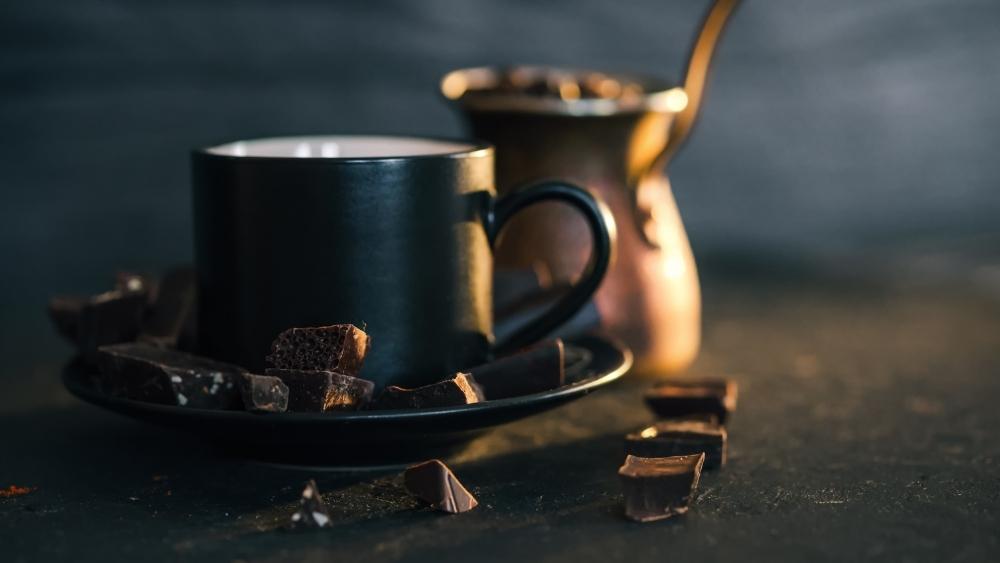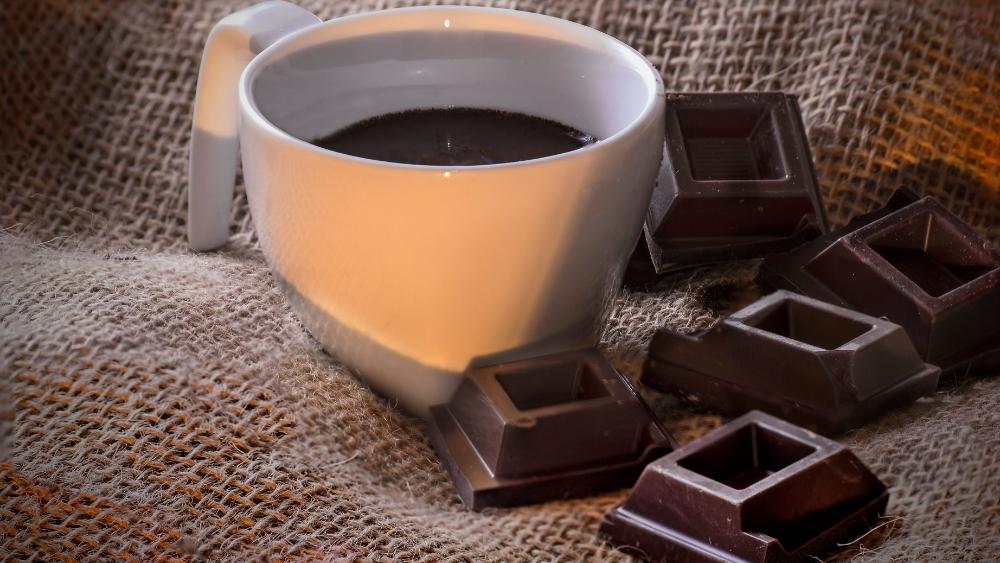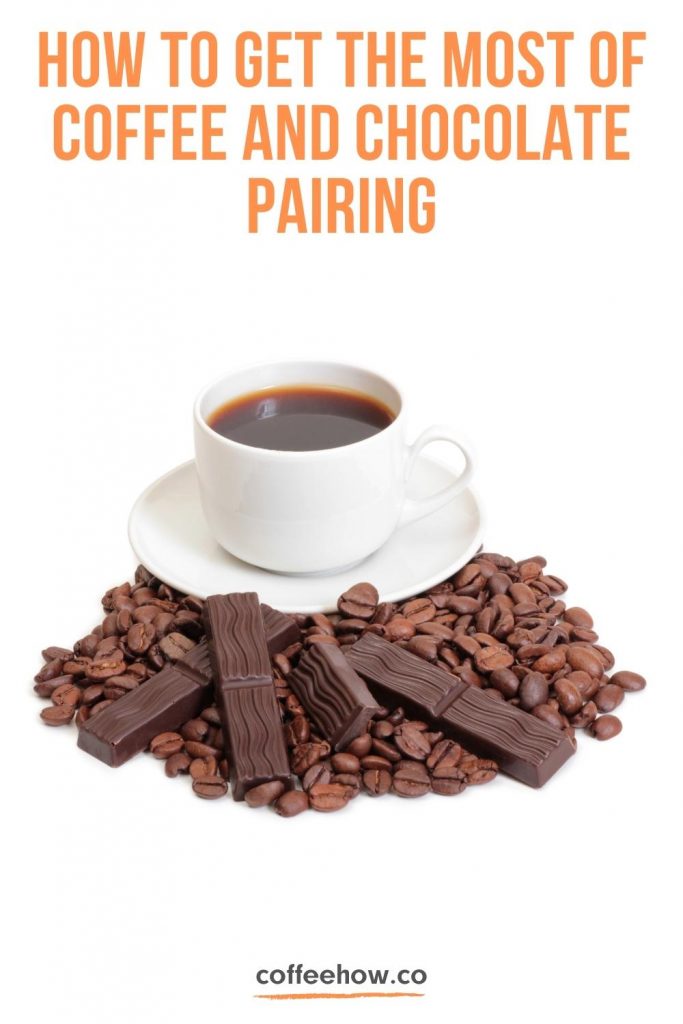fbq('trackCustom', 'view_shop_coffee'); var trackEvent = 'shop_coffee'; You love chocolate. You love coffee. Put them together,…
For many people, life without coffee or chocolate is simply unimaginable. The former – an energizing elixir of life, while the latter a delectable treat – the iconic beans have been dominating our senses with their complex flavors for a long time. Exquisite on their own, together, they make an unforgettable pairing that wins over the hearts of the most demanding of gourmets, be it a cup of mocha or a fresh cake that combines both of them as ingredients.
Still, with many varieties of coffee beans and different kinds of chocolate out there, not all combinations will create harmony. For the best experience, you need to consider the flavor, acidity, and intensity of your coffee and chocolate, and you have to understand how they play together.
Of course, it’s up to you whether you enjoy a specific pairing or not. Still, if you’re looking for the perfect match, here are some rules that you should know.

As a general rule, you should pair items that are alike in their intensity. That’s why, if you have something with a strong flavor, you need to select something with an equally powerful taste that won’t be overpowered when combined.
When pairing together a strong brew with a bar of milder chocolate, coffee will mask the subtle flavor notes of the treat, taking part of the pleasure away from the whole experience. So before you buy bulk cocoa powder to prepare desserts or to add to your coffee beverage, make sure it has a robust flavor that will go with your favorite coffee beans.

Another essential element is acidity, or rather that little bite and sparkle on your tongue when drinking your coffee. A brew with less acidity might be better for creating exciting pairing opportunities because it won’t overpower the complex undertones present in chocolate.
The acidity level of your coffee depends on its growing conditions, especially the altitude – the higher the plantation, the more intense the acidic notes. However, the beans roasting process may degrade or enhance this acidity.

When creating the perfect pairing of coffee and chocolate, your main focus will be on the flavor as those basic notes interact with each other the most, deciding about the compatibility of a particular match.
While you want to match the intensity like-to-like, it’s not particularly the case with flavor, as you’ll have to create a delectable balance between the sweetness of the chocolate and the bitterness of the coffee.
For example, a dark 90% chocolate and coffee with bitter undertones might be a little too much unless you’re a big fan of such strong flavors. In this case, you might want to combat the taste with a sweeter treat or choose a bar of dark chocolate with added flavor, like caramel.
The market offers many different coffee beans and chocolates, each with its own complex taste profiles depending on the brand, origins, and roasts. We’ve created four main categories from the incredibly rich variety of coffee flavors that will help us determine which pairings should go well together.
Brewed coffees with nut undertones, such as those sourced from Brazilia, Colombia, Honduras, India, Mexico, and Peru, create a room for wonderful possibilities. With its creaminess and a hint of sweetness, nutty coffee will work well with milk and slightly dark chocolates of less than 70% cocoa content.
What’s more, they might also be paired with fruity or spicy chocolates, which will create an exciting contrast. Aside from chocolate bars, coffees with nut notes are perfect for other desserts, such as brownies, cookies, or praline truffles.
Originating from Indonesia and Papua New Guinea, coffees with earthy and spicy undertones offer lower acidity and heavier mouthfeel, making them a good match for slightly bitter chocolates with 50-70% cocoa content. You could also try to pair them with chocolates with nuts and dried fruits or salty chocolate, which will add a nice spicy contrast to the whole experience.
A more delicate in flavor, you’ll find fruity and floral coffees in Guatemala, Costa Rica, Panama, Salvadore, and Africa. Their light undertones can be easily overpowered, so it’s better to avoid intense chocolates.
Instead, choose milk chocolates with less than 55% cocoa content to complement the fruity notes with their sweetness. What’s more, you could go for desserts such as truffles with fruity liquors or chocolate-dipped fruits, which will further enhance the exquisite undertones.
The taste of your coffee largely depends on the roasting process of the beans. As the dark roasts stay on the roasting machine for a longer time or at a higher temperature, the original flavors are overshadowed by the flavors of the roasting process.
Though they all tend to be bold and rich, dark roasts have their own flavor unique profiles, depending on the process. For example, Italian roasts, which are the darkest of them all, are rather bitter, so you can pair them with chocolate with 60-85% cocoa content or brownies.
Vienna roasts are the lightest of the dark roasts, and they are slightly sweeter. It will be perfect for chocolates with a minimum of 70% cocoa content, truffles, or chocolates with sweet liquors.

In the end, the perfect pairing of coffee and chocolate depends on your personal taste. However, the above guidelines will help you choose the best combination for your dessert or beverage, whether you follow your heart or stick to a certain flavor profile.
Keep in mind that you should never force yourself to enjoy something that doesn’t appeal to you, but if you’re looking for a new experience, do try other combinations. After all, exploring all the possibilities might lead you to discover the perfect match for your palate.
